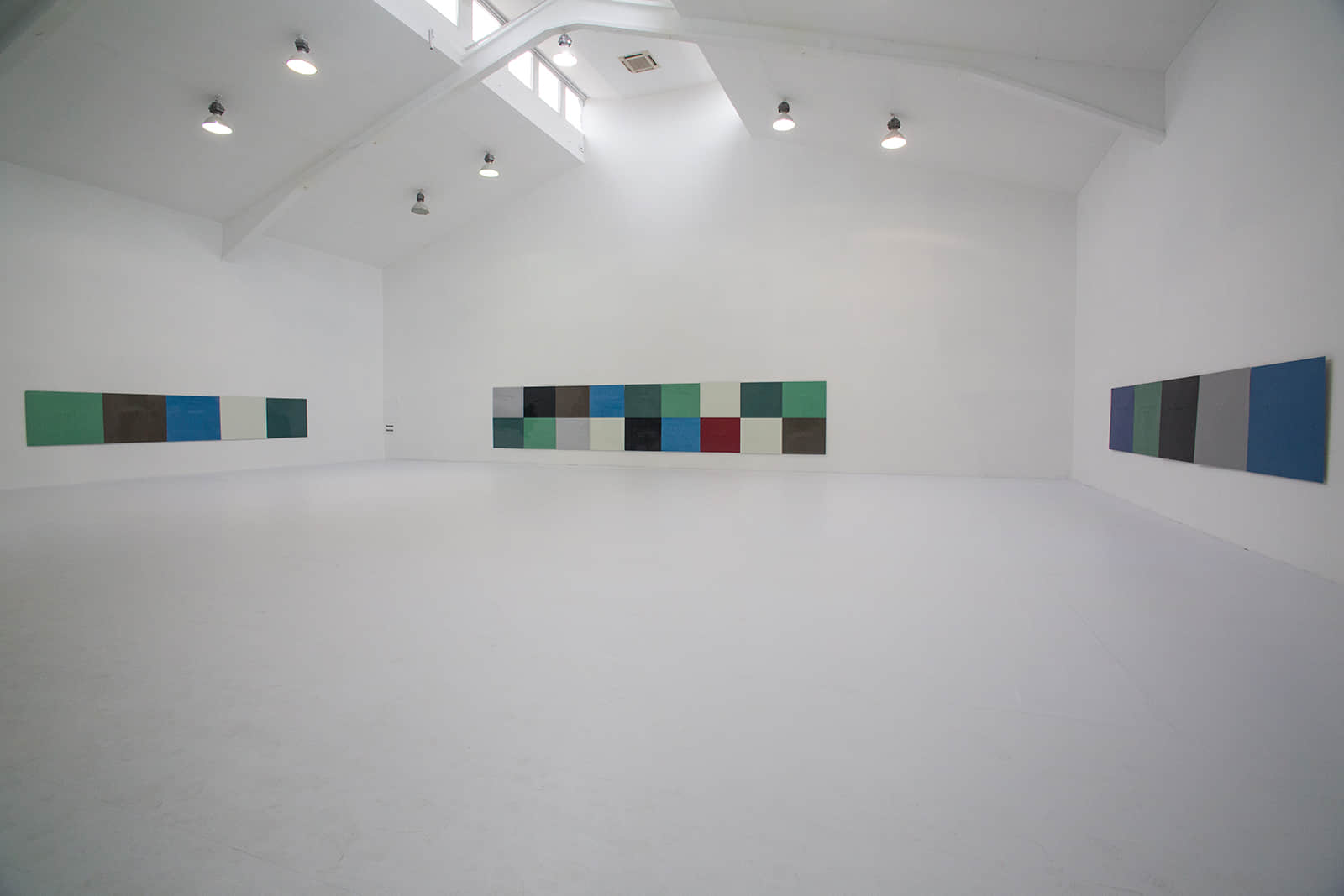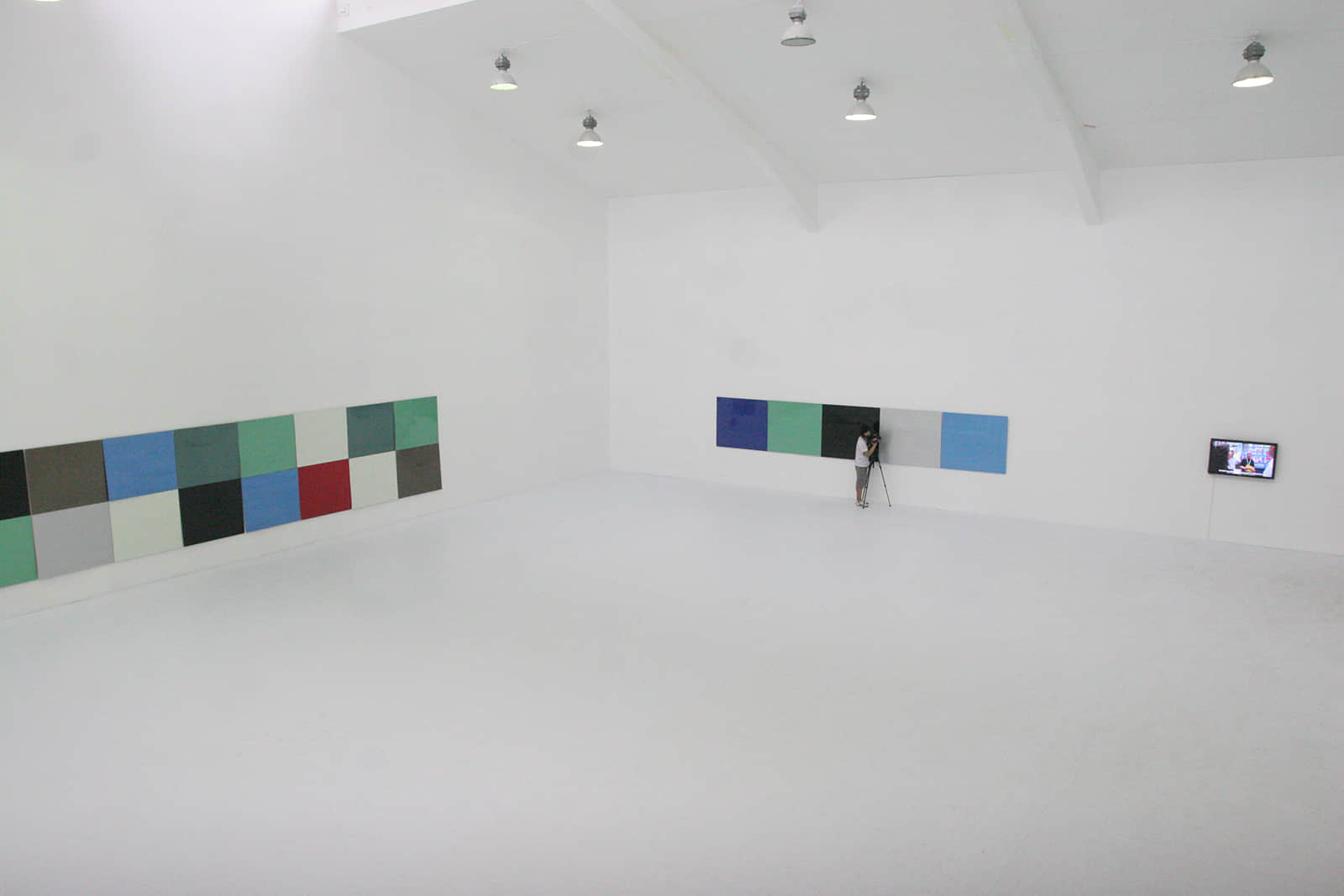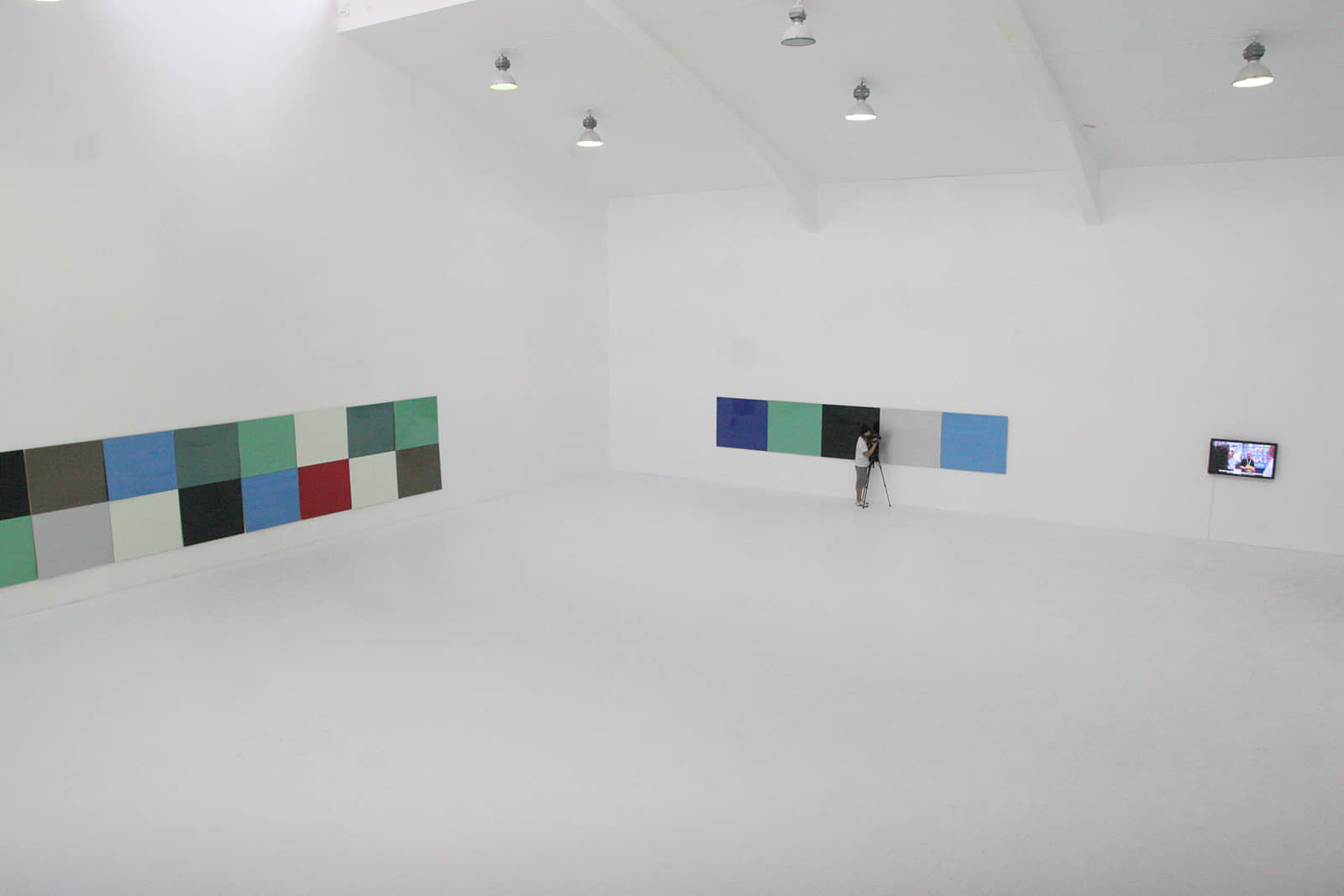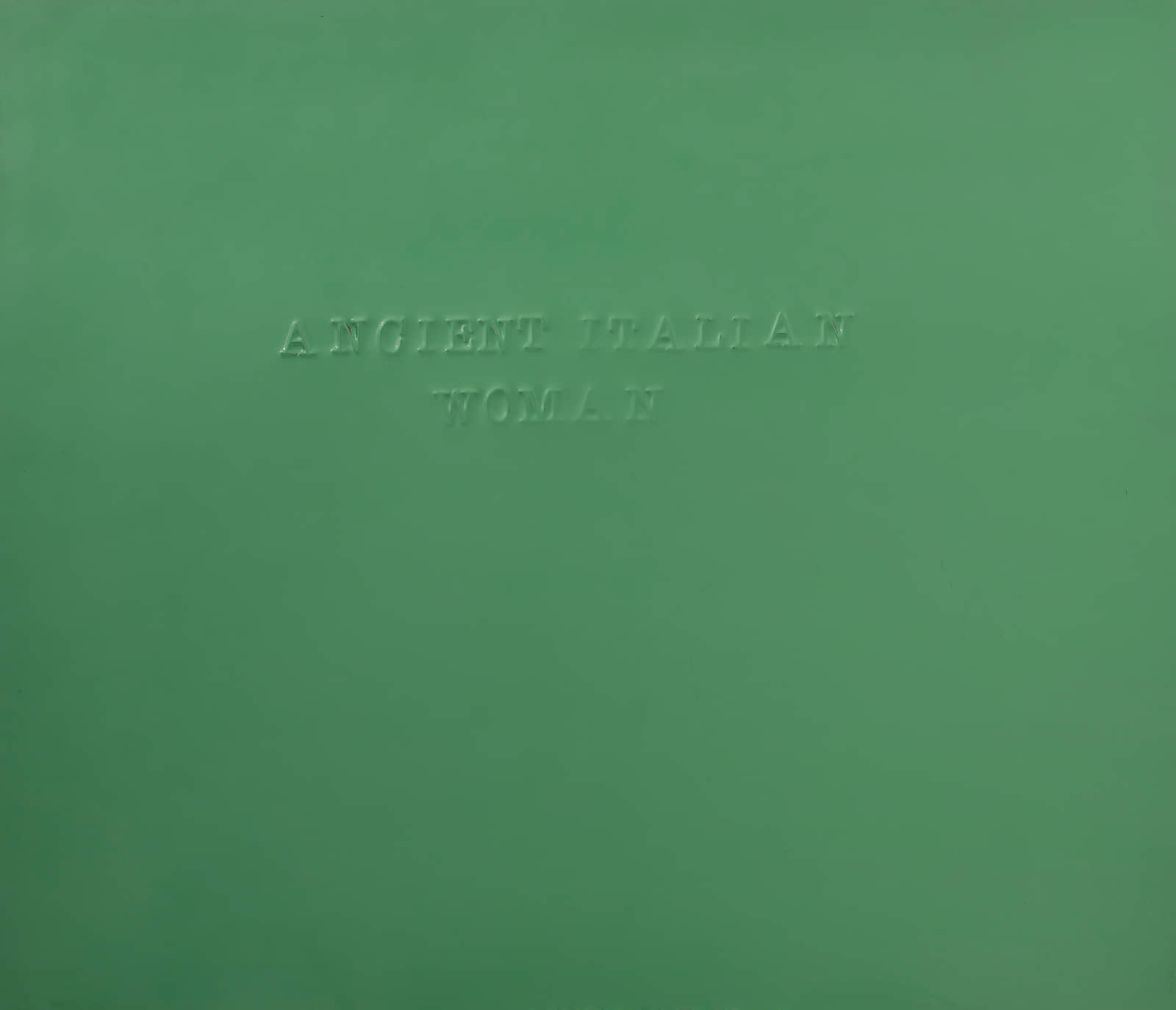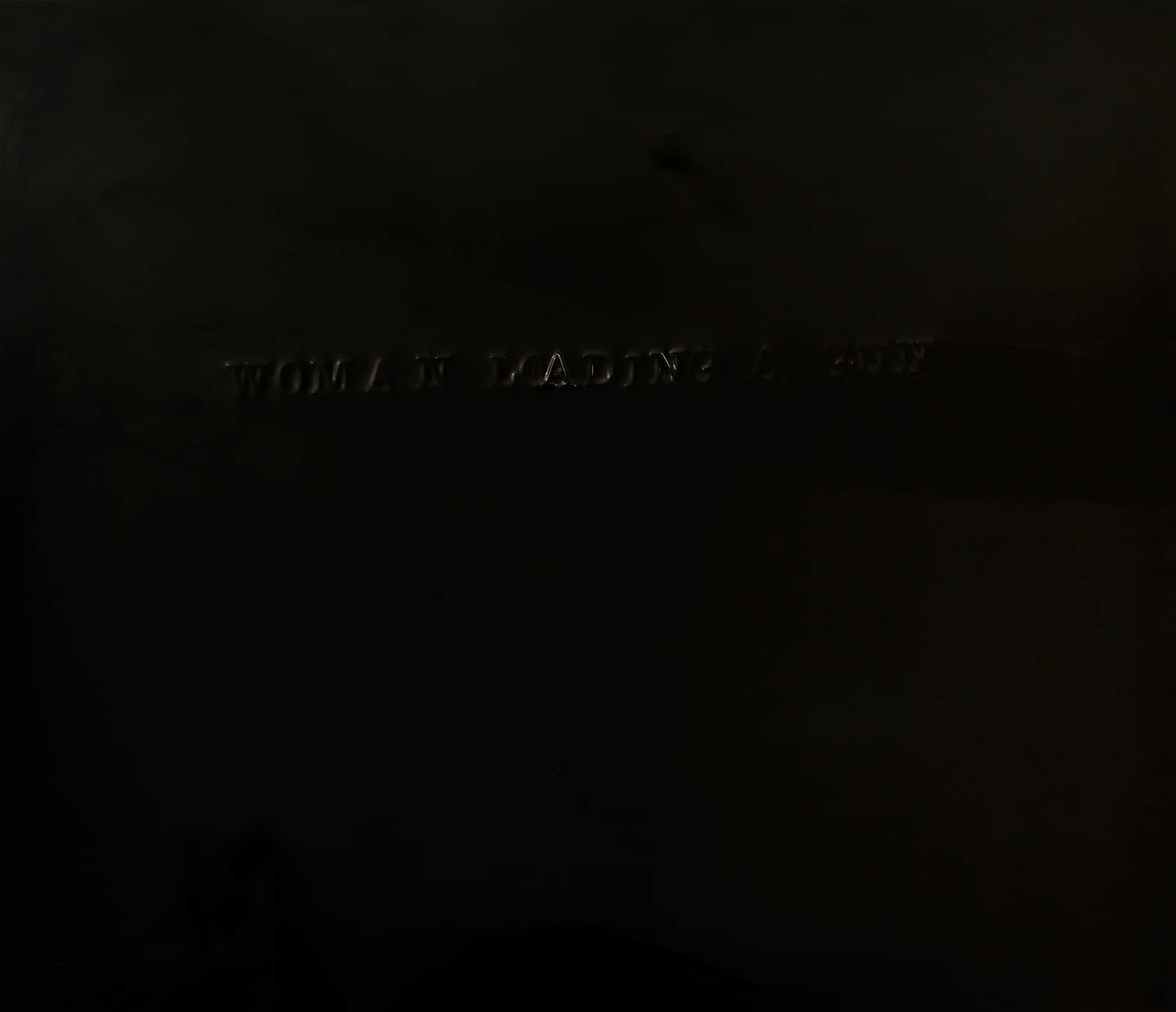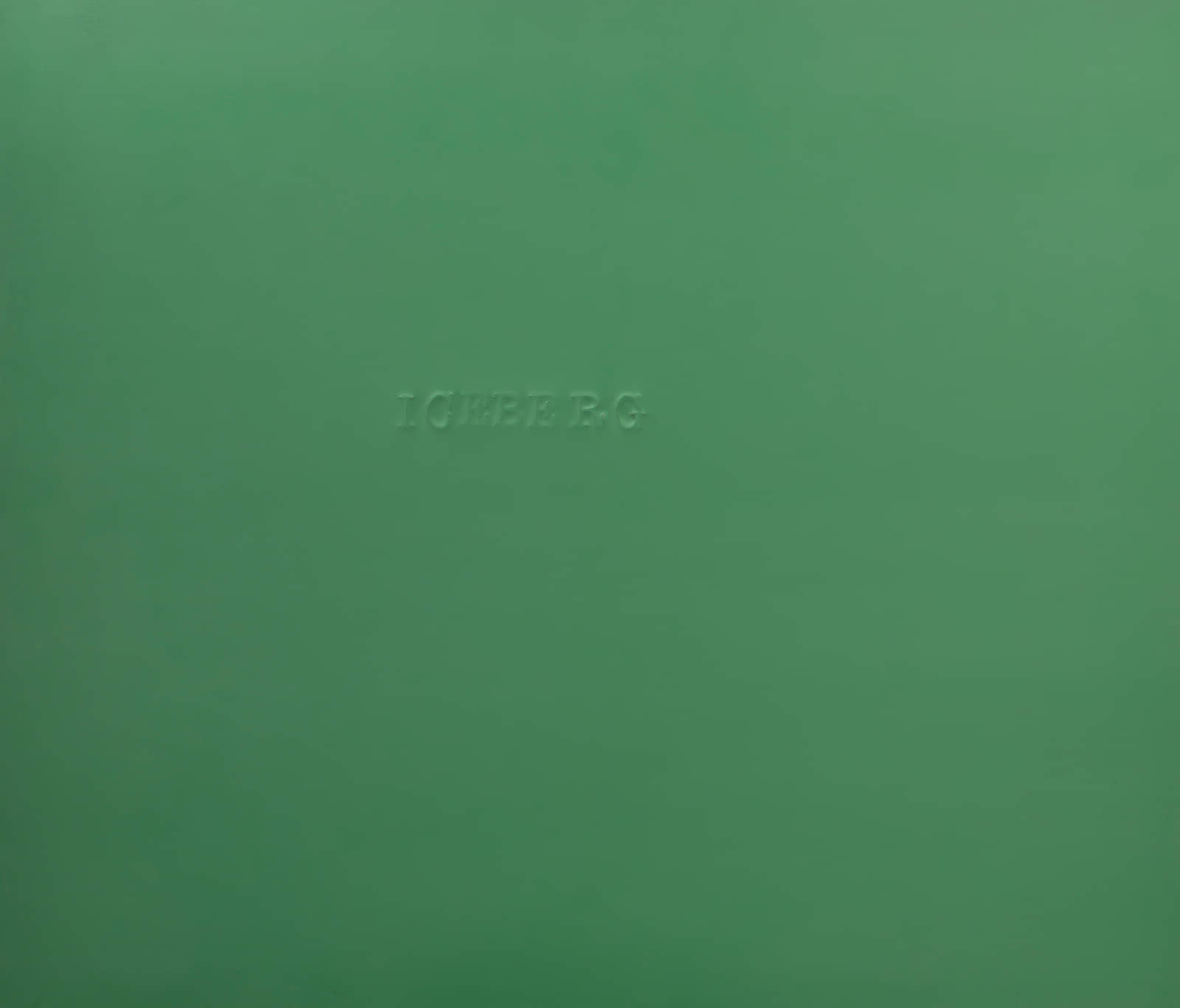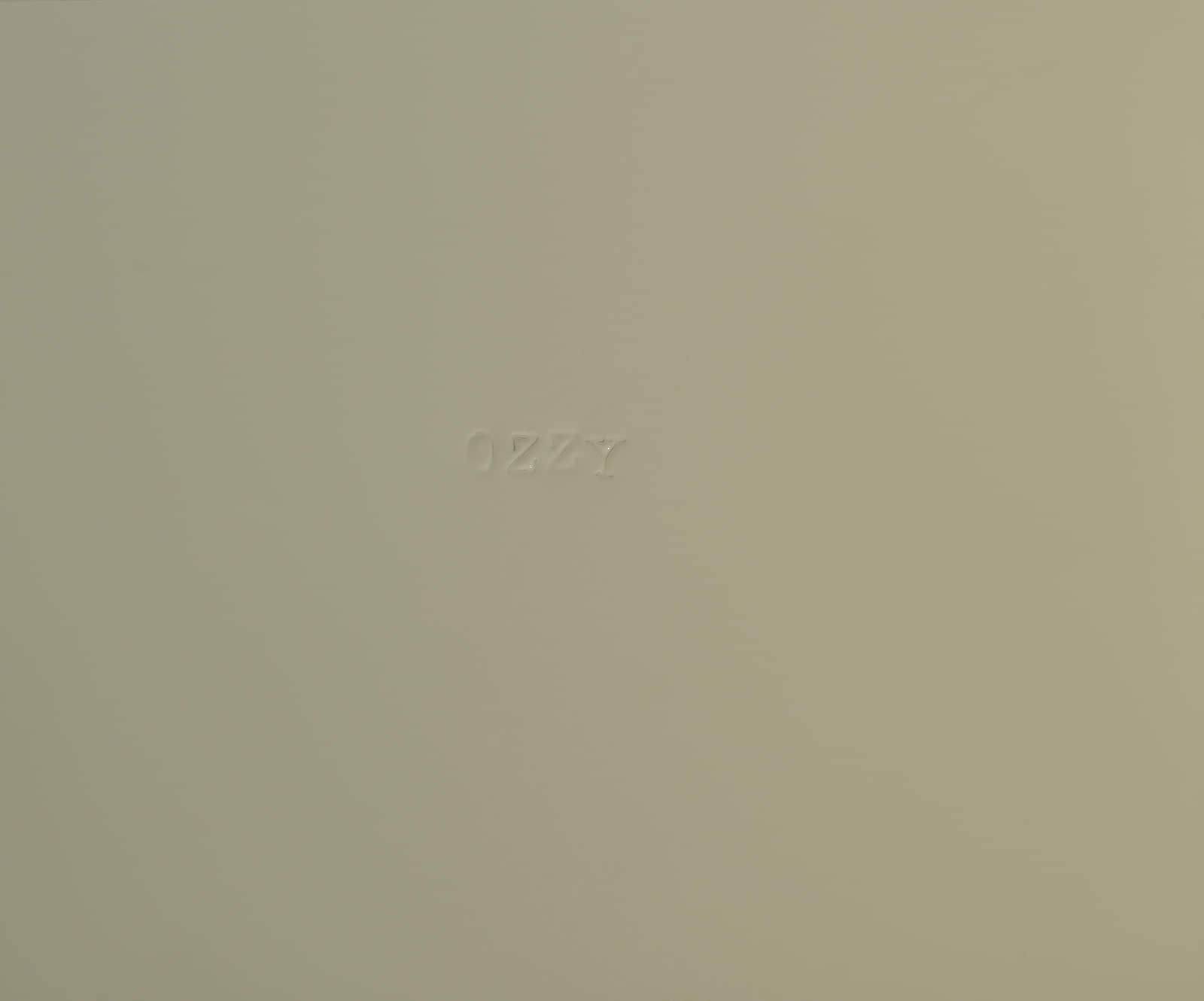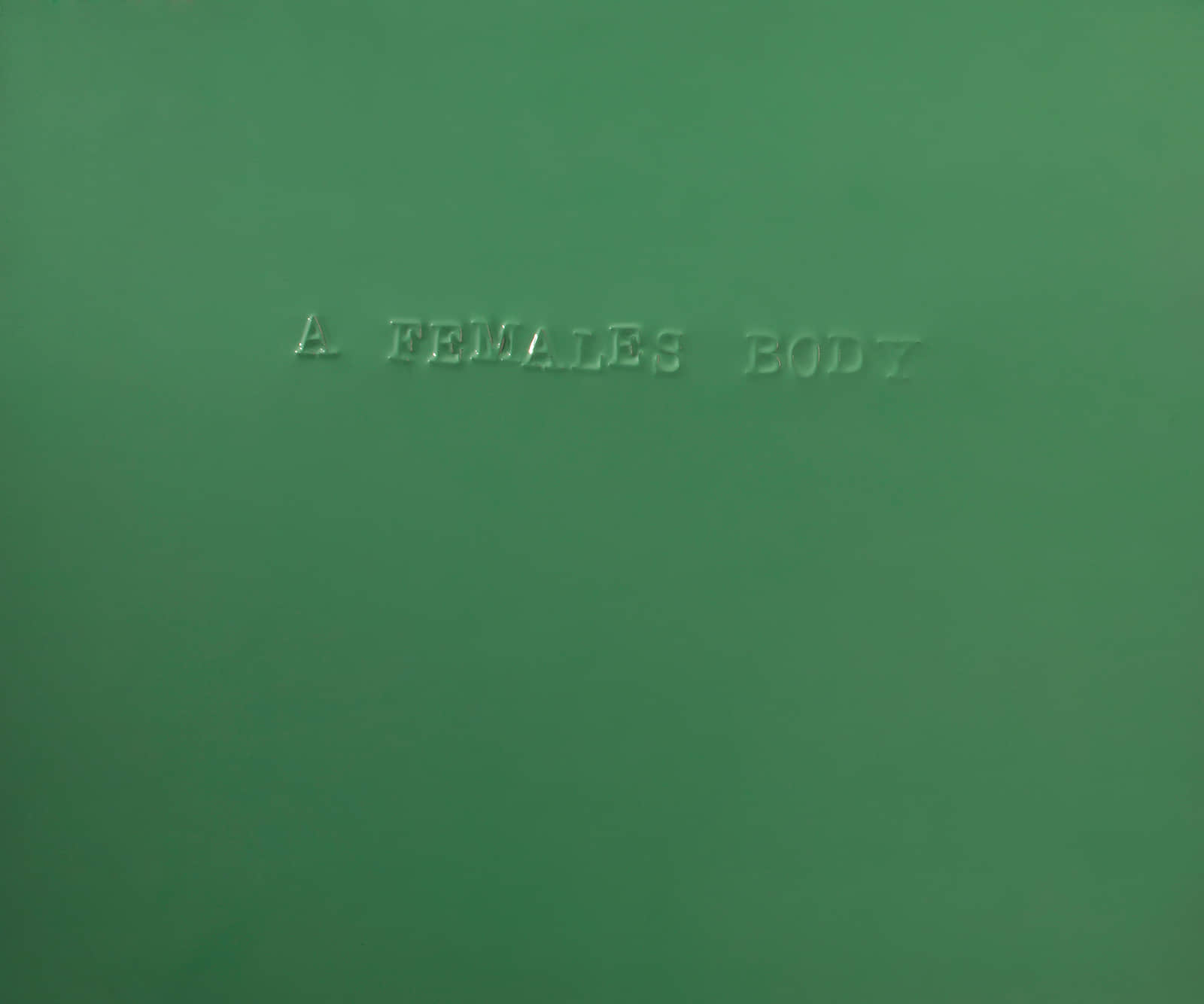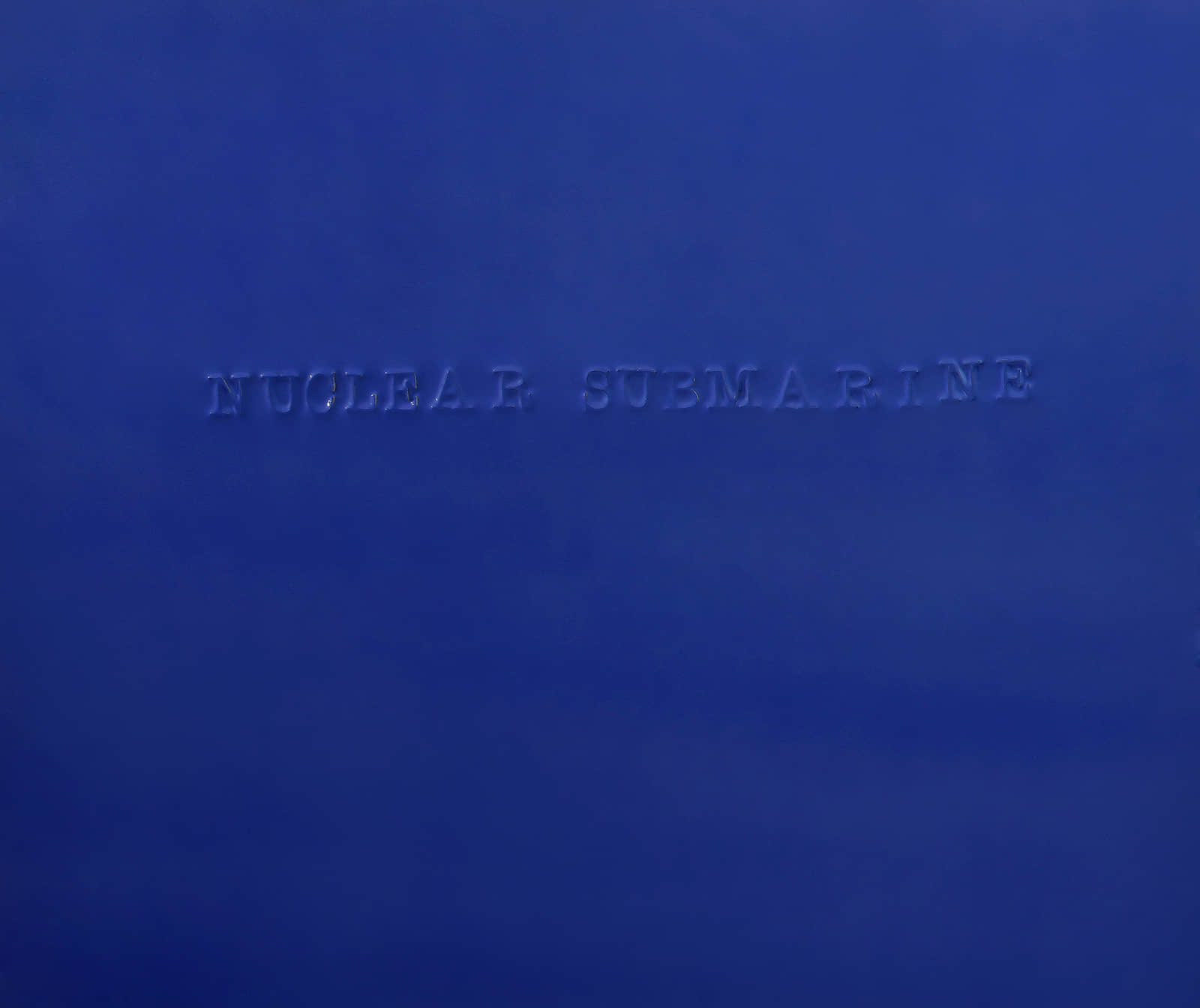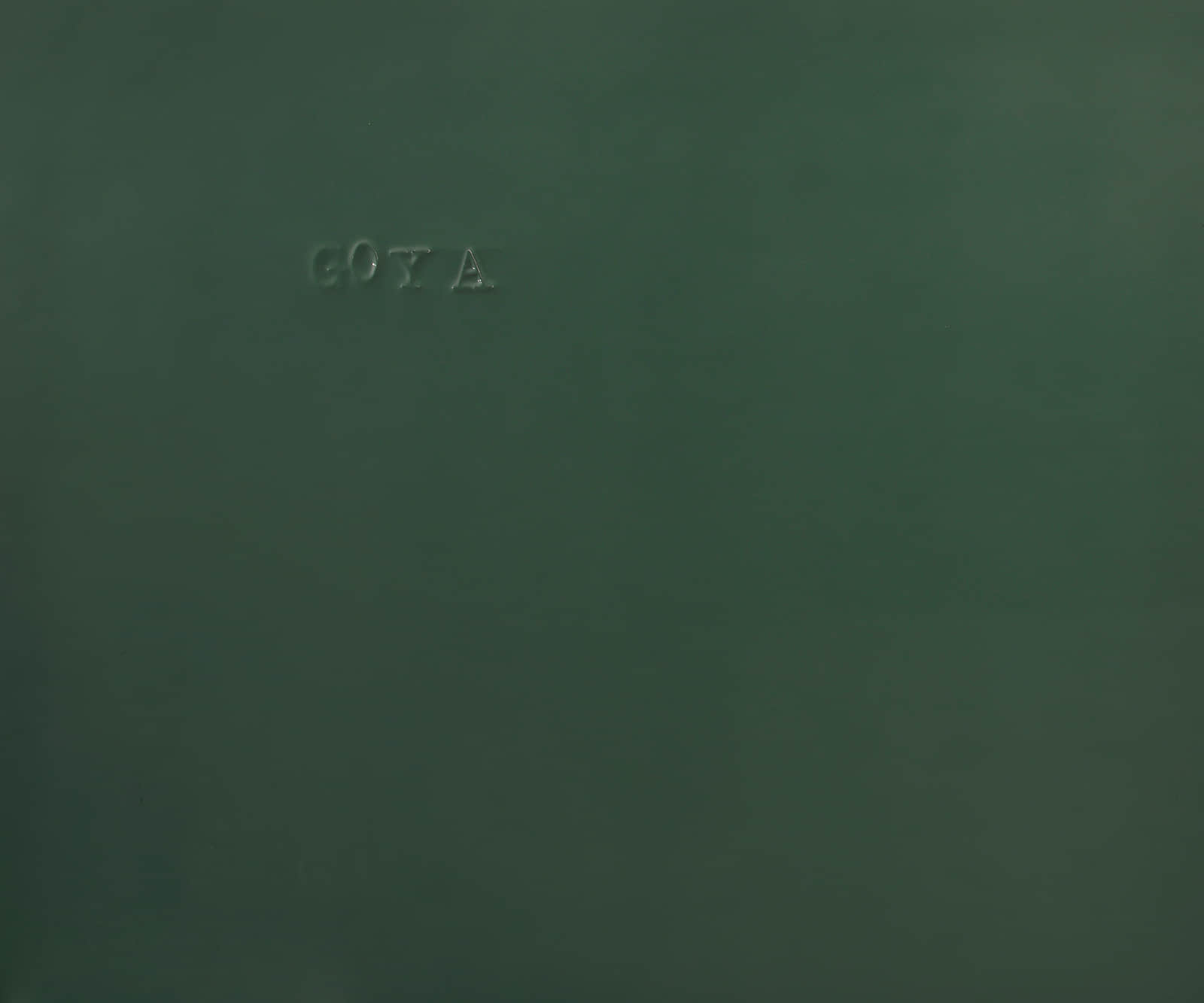图像会消失吗?或者图像会死吗?这些问题都来自对《圣经》的挪用和暗喻,死亡在这里就预示着复活,而关于上帝创世纪为七天,耶稣复活在三天之后,这是否提示了颜磊艺术中的某种阶段性呢?
颜磊将这些图像都转化为只有单色表面的色块,在卡塞尔文献展展厅空间中形成了类似于教堂的绘画穹顶,这些单色块的出现让空间更具备一种看似被颜色覆盖,实则对人心理上的暗示,这些单色块既是消费和工业生产的产物,也可以被看作是来自教堂窗户的彩色玻璃,它们的意义都指向了一个共同的经验记忆或是渴望的暗示。这与颜磊之前很多作品的情况相仿佛,如《去德国的展览有你吗?》(1996年)、《邀请信》(1997年)、《我能看看你的作品吗?》(1997年)等。在这些作品延伸,也就自然的转化为颜磊自身系统的一部分。而颜磊之后就这些单色绘画背后文字的使用,更是起到了叠加记忆的效果,并通过其他人来完成这一延伸关系,同时也确认了这一延伸关系在现实社会中的作用,一方面检验了关于绘画和认知之间的关系,一方面检验了来自美术体制自身合理性和合法性的问题,同时指向了消费和对艺术家这一身份的批判。
Can images disappear? Can images die? These questions arise from the appropriation of and reference to The Bible. Here, death foretells resurrection. God creating the world in seven days and Jesus rising from the dead after three days also suggest that there are also stages to Yan’s work.
Yan Lei transforms these images using only blocks of color, and in the Documenta space, they formed an almost church-like painted dome. These colored blocks made it seem as if the space was covered in color, an association that shows us something about ourselves. These colored blocks are the products of consumerism and industrial production, but they can also be seen as stained glass from a church window. These blocks point to collective memory and experience, and hint at our desires. This is similar to many of Yan’s previous work, such as Are You in that Exhibition in Germany? (1996), Invitation Letter (1997), and Can I See Your Work? (1997). These pieces naturally became a part of Yan Lei’s artistic system. His later works hide words behind these colored paintings, which inspire layered memories. He extends these works through other people and affirms their role in society. He examines the relationship between painting and knowledge, while also probing issues of rationality and legitimacy in the art system. When taken together, they provide a critique of consumerism and the status of the artist.

